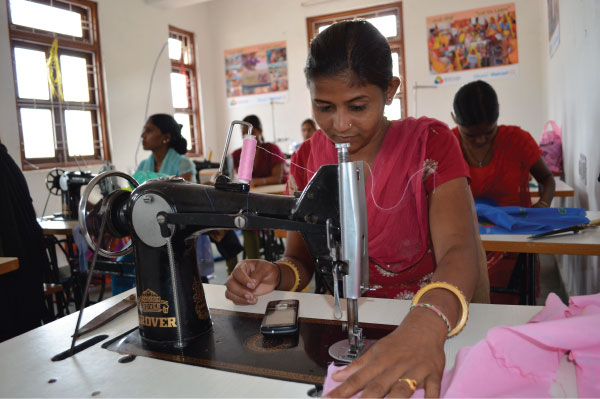As a new READ Center launches in Bhutan, adding to the 2.1 million total rural villagers served by our centers, you may be thinking – that sounds great, but just how sustainable are these centers? Will they stand as long term establishments in their communities, or is this just another organization’s well-intentioned, but misguided, attempt at global development?
Excellent question. The answer lies within our sustaining enterprises – an innovative piece of the READ model that allows our centers to not only be self-sustaining, but scalable. By leveraging each community’s skills, strengths and traditions, our centers provide livelihood trainings that allow villagers to launch sustaining enterprises that fit the needs of their community. It’s READ Global’s unique, proven solution to global development, resulting in a wide range of sustaining enterprises created by our centers – from bee-farming to boutique bed and breakfast lodging, to community radio programs to microfinance cooperatives.
A group of men in Ullon village gather fish to sell at their local market 
To get more insight directly from the field, we’re speaking with READ India staff member Nayanika Sharma about READ India’s vision for sustaining enterprises and how they operate.
READ Global: Hi, Nayanika! Thanks for taking the time to chat with us. Can you tell us more about READ India’s innovative strategy for sustaining enterprises?
Nayanika: READ India is giving rural communities access to urban retail markets that they would not otherwise have. Because of the networks that READ has established, we are able to bring isolated communities to the forefront and position them for success at exhibitions and conferences, where they can give demos of their skills and of course, generate business.
READ Global: How essential are these enterprises to our READ Centers?
Nayanika: A READ Center’s purpose is essentially to catalyze the development of a community, and the goal is for these centers to sustain themselves through the community’s success. Thus, the sustaining enterprises are essential, as the village must reach a point where they are able to generate a consistent stream of income. Especially in India, where we must constantly tackle the lack of employment opportunities – these social enterprises provide the solution.
READ Global: What’s the connection between a READ Center’s livelihood trainings and its sustaining enterprises?
Nayanika: READ’s training programs give villagers context to their skills and allow them to think in terms of the contemporary consumer. In addition to their skill development, they must understand the chain of supply and demand, design, marketing, and retail so that they sustain themselves in the future. Our livelihood trainings focus on all of these elements, because the key is not to master one or two of these pieces, but the process as a whole.
A woman from Geejgarh village takes a sewing training 
READ Global: Is there a sustaining enterprise that is personally impactful to you?
Nayanika: I am particularly attached to the women and craft form that comes from Chhainsa, Haryana. This area has always been particularly challenging to work with, and is therefore even more rewarding when we can see results. When I was there for a 6 month project, I saw the women participants change from being resistant to now being proud artisans.
Intense gender inequality prevails in this part of the country, so empowering the women to come out of their homes and into a place of work, and show them how to generate their own income – it’s one of the biggest steps in building confidence and helping them form an identity of their own.
Women in Chhainsa, Haryana take a READ Center training with
the help of experts from Shristi School of Design 
READ Global: With Diwali this week, will our READ India Centers be creating anything special?
Nayanika: Diwali, an ancient Hindu festival signifying the victory of good over evil, is one of the biggest, brightest festivals in India and everybody buys products for their homes and as gifts. We have displayed a large variety of our artisans’ products at multiple exhibitions this week including traditional diyas, candles, daris, handmade jewelry, and handcrafted stools.
We’ll be showcased at the Dastakar exhibition, India’s largest craft fair, which happens twice every year. Apart from the commercial benefit of retailing in this space, we are participating to gain exposure to the target consumers and establish our name among craft-based product suppliers. This will help us validate our products and our viability.
Handcrafted items made in celebration of Diwali 
Many thanks to Nayanika for her insight on what READ’s sustaining enterprises look like on a daily basis, and thanks to our supporters for making this crucial work possible. Happy Diwali, everyone!
If you’d like to help us continue seed-funding READ Centers and their sustaining enterprises across South Asia, please consider making a contribution here.
About Nayanika Sharma:

Nayanika Sharma, READ India Staff Member
Nayanika is a Product Designer from the Srishti School of Art, Design and Technology in Bangalore, India. Upon completing her degree project in which she developed a business model for the women of Chainssa, Haryana to establish a sustainable enterprise, she joined the READ India team as a design consultant. She now works with six communities from all over India to help develop design and craft-based sustainable modules.




